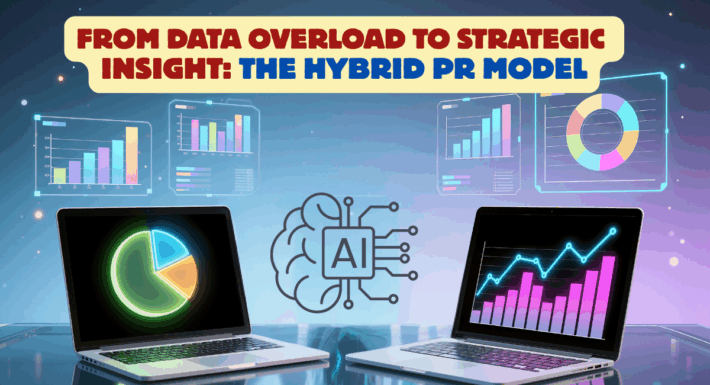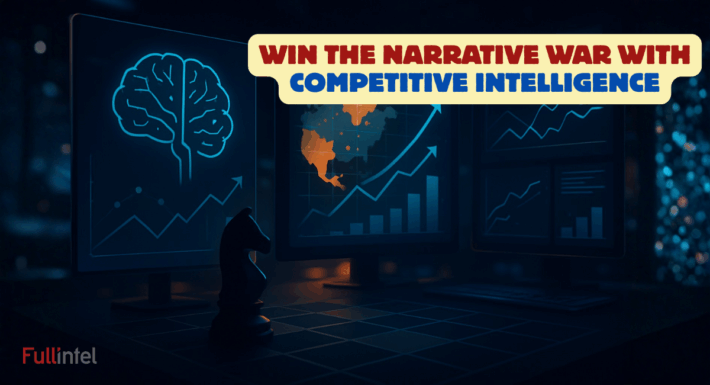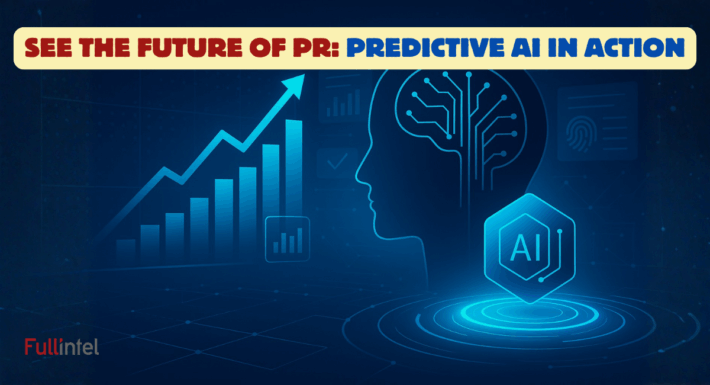AI Media Monitoring: Why Automation Alone Isn’t Enough

I had a conversation last week with a VP of Communications who’d just cancelled their media monitoring subscription. Her team had switched to an AI-powered tool six months earlier, attracted by promises of 24/7 coverage and instant sentiment analysis. The result? They missed a brewing crisis in a niche industry forum because the automated system classified angry posts as “neutral.” By the time a human caught it, the story had been picked up by trade publications.
She’s not alone. While 72% of organizations have adopted AI for various functions, the gap between what these tools promise and what they deliver in media intelligence remains substantial.
The 50% Accuracy Problem
Here’s what the industry doesn’t advertise: automated sentiment analysis achieves roughly 50-60% accuracy. Human analysts? 80-85%.
That’s not a minor difference. That’s the gap between useful intelligence and a coin flip.
The numbers tell the story. Research from FreshMinds found that automated tools correctly categorized media mentions only 30% of the time. Meanwhile, 65% of PR professionals report struggling with noise and irrelevant data from their monitoring tools, and 40% face constant battles with false positives and incorrect sentiment readings.
The problem compounds when you consider what’s at stake. Traditional alert systems generate false positive rates as high as 90%, forcing teams to manually sort through mountains of irrelevant data just to find the signal in the noise.
Where Automation Breaks Down
Sarcasm destroys AI sentiment analysis. A tweet reading “I love how your customer service put me on hold for two hours” gets classified as positive. Cultural context confuses these systems—a phrase that’s complimentary in one region reads as criticism in another. Industry-specific language that any PR professional would instantly understand can get misinterpreted.
Brandi Sims from Brandinc PR encountered this firsthand during coverage of Shedeur Sanders’ selection in the NFL draft. “There was a flood of commentary about his slide in the draft rankings,” she explained. “If I relied strictly on sentiment analysis, I’d likely interpret much of it as negative opinion. But in reality, the conversation was more nuanced. While people were discussing a negative situation, many comments were sympathetic or supportive of Sanders himself.”
Studies show that 31% of missed crisis cases stem from subtle onset signals that automated systems can’t detect, 24% from platform-specific jargon or slang, and 17% from multilingual posts or code-switching that confuses language models.
Crisis detection suffers particularly. One communications director told me that their free monitoring tool missed paywalled trade publication coverage, which eventually triggered mainstream media attention. By the time Google Alerts caught it, they were responding instead of getting ahead of the narrative.
What Humans See That Algorithms Miss
Context isn’t just about understanding sarcasm. It is identifying relationships that algorithms miss.
When a mid-level industry blogger with 5,000 highly engaged followers writes a critical piece, that carries more weight than a generic mention on a site with 100,000 random visitors, algorithms struggle with this distinction. They count mentions. Humans assess impact.
Strategic thinking requires judgment that automation can’t replicate. An experienced analyst identifies patterns across disparate sources, anticipates emerging narratives before they gain traction, and understands why certain stories resonate while others fade. They know when a seemingly minor mention in a trade publication signals bigger trouble ahead.
Source credibility assessment depends on nuanced knowledge. What’s a journalist’s track record? Which outlets does your target audience actually trust? Which social media accounts punch above their follower count because they’re respected industry voices? These evaluations require expertise, not just data processing.
The strategic integration of AI and human expertise addresses these limitations. Research from the Institute for Public Relations confirms what practitioners already know: “Integrating human expertise with automation is vital to delivering comprehensive and reliable media measurement.”
The Hybrid Advantage: Speed Meets Accuracy
The solution isn’t choosing between AI and humans. It’s leveraging both strategically.
AI processes volume at impossible speed. It monitors millions of sources 24/7, flags potential issues instantly, and surfaces patterns across massive datasets. Humans provide the interpretation, strategic assessment, and judgment calls that turn data into actionable insights, guiding you on what to do next.
Companies that utilize predictive AI capabilities in conjunction with expert analysis report 30% faster crisis response times. AI-powered early warning systems can provide 6-8 days’ advance notice of emerging issues—but only when humans validate and prioritize those alerts.
The ROI speaks clearly. Organizations implementing hybrid approaches see $3.70 return for every dollar invested in generative AI initiatives. That’s a 10x increase from 2023 to 2024, primarily driven by combining automation efficiency with human accuracy.
Consider how this plays out practically. AI scans global media and identifies a spike in negative mentions. Speed matters here—you want that alert immediately. However, a human analyst then reviews the context: Are these legitimate concerns or coordinated attacks? Is the sentiment genuinely negative, or are people discussing a negative situation in a sympathetic manner? Does this require an immediate response, or is it just noise that will fade?
That combination—instant detection plus expert assessment—creates crisis prevention through media monitoring that neither approach achieves independently.
How to Evaluate Monitoring Tools in 2025
The market’s flooded with tools claiming AI-powered capabilities. Here’s what to look for:
Human involvement in the workflow. Ask vendors specifically: Where do human analysts engage with the system? If the answer is “humans only review escalated issues,” that’s a red flag. Quality monitoring requires human oversight throughout the process, not just at crisis points.
Accuracy metrics with context. Don’t accept vague claims about “advanced sentiment analysis.” Ask for specific accuracy rates and how they’re measured. Request examples of how the system handles sarcasm, industry jargon, and multilingual content.
Customization capability. Generic algorithms trained on broad datasets often overlook industry-specific nuances. Your monitoring should reflect your sector’s unique language, key voices, and competitive landscape. This requires human expertise in setup and ongoing refinement.
Strategic analysis, not just data dumps. Mentions and sentiment charts tell you what happened. Strategic analysis tells you what it means and what to do about it. Tools that provide only raw data leave the hardest work—interpretation—to you.
According to recent research, 67% of PR professionals want predictive analytics capabilities, and 53% seek prescriptive analysis that provides actionable recommendations rather than just insights. These capabilities require human expertise combined with AI processing power.
When evaluating vendors, consider the difference between analyst-supported media intelligence and purely automated systems. The cost difference may be significant, but so is the accuracy gap.
What’s Next for Media Monitoring
AI will handle an increasing amount of data processing, pattern recognition, and initial categorization. It should. That’s where automation excels.
However, the interpretation and judgment, understanding what matters, making informed judgments, and connecting insights to business objectives, remain requirements that require human expertise. As AI-powered media monitoring trends continue evolving, the winning approach combines machine efficiency with human wisdom.
Dr. Cornelia C. Walther from Wharton frames it well: “Hybrid intelligence combines the best of AI and humans, leading to more sustainable, creative, and trustworthy results. The combination of AI’s speed and analytical rigor and natural intelligence’s depth of insight allows organizations to harness solid data-driven capabilities while honoring essential human values, ethical reasoning, and collective stewardship.”
That VP of Communications I mentioned? She’s rebuilding her monitoring approach with a hybrid model. She learned a costly lesson about the limitations of automation. You don’t have to.
The question isn’t whether to use AI in media monitoring; the question is how to use it effectively. It’s about combining human expertise in ways that deliver both speed and accuracy, as well as scale and nuance, efficiency and strategic insight.
Because 50% accuracy isn’t monitoring, it’s guessing.
Ted Skinner is the VP of Marketing at Fullintel with extensive experience in AI implementation for public relations and media monitoring. A recognized expert in crisis communication strategy and competitive intelligence, Ted specializes in developing practical applications for AI in PR workflows. His thought leadership focuses on helping PR professionals leverage technology to enhance strategic communications while maintaining the human insight that drives successful media relations.
Read more of Ted’s insights on AI-powered PR strategies and follow his latest thinking on modern measurement approaches.



